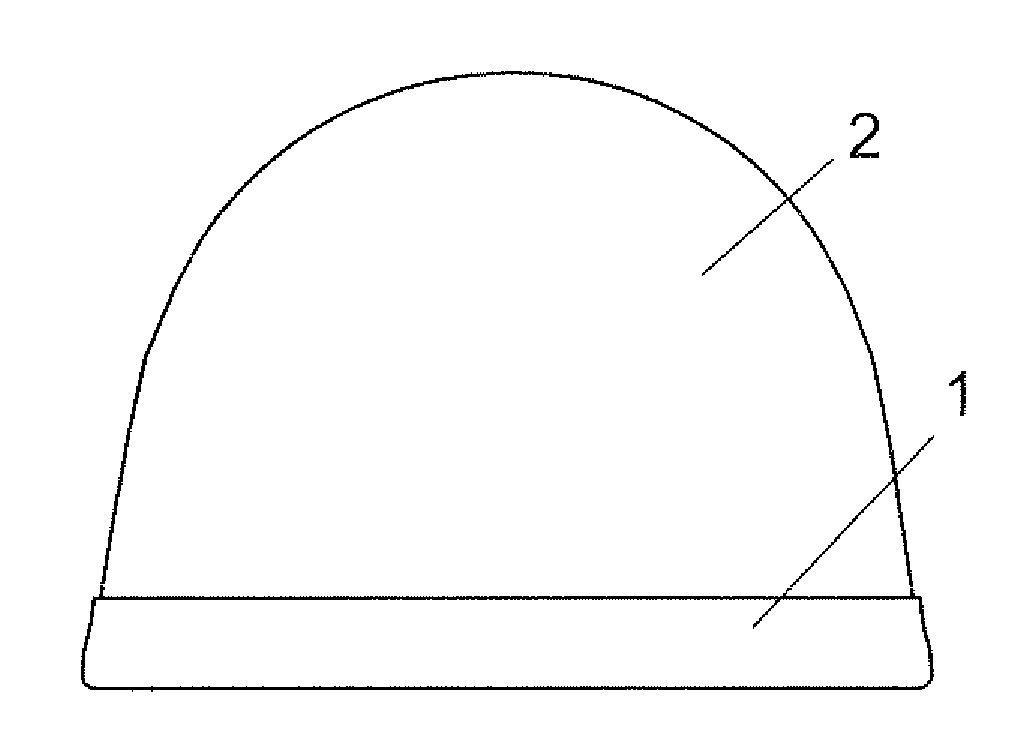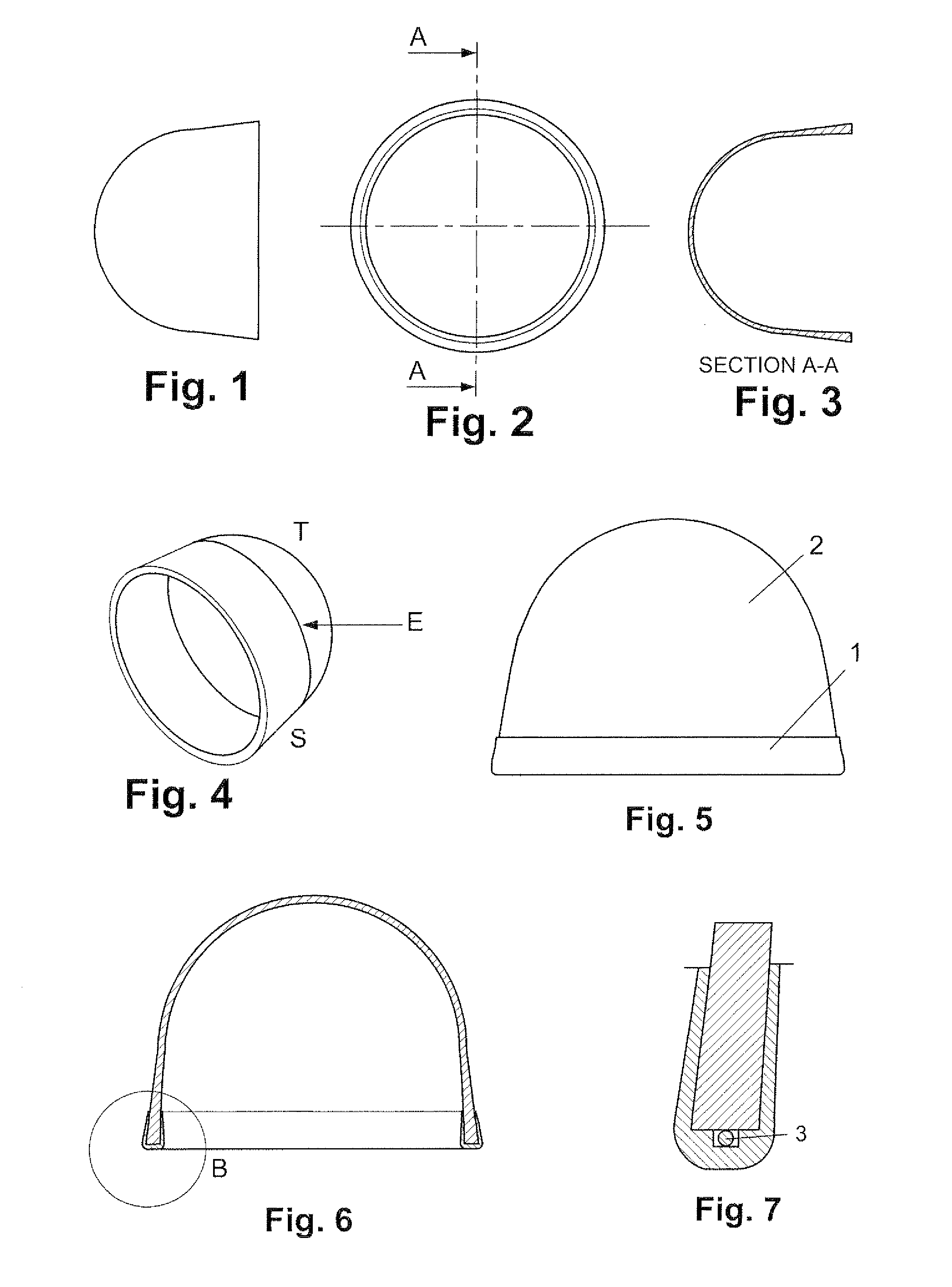Medical device for insertion into a joint
a medical device and joint technology, applied in the direction of shoulder joints, joint implants, prostheses, etc., can solve the problems of affecting the quality of life of patients, so as to reduce the number of particles produced.
- Summary
- Abstract
- Description
- Claims
- Application Information
AI Technical Summary
Benefits of technology
Problems solved by technology
Method used
Image
Examples
example 1
Artificial Cartilage Cup
[0678]The artificial cartilage cup is an artificial joint spacer made to replace the missing or damaged cartilage so the joint can stay mobile.
[0679]The cup is based on a sandwich construction with a LDPE core reinforced on both sides with fibre fabric.
[0680]At the edge metal markers makes it possible to trace the cup when implanted.
[0681]The round LDPE collar of the cup makes a cup without sharp edges and captures the metal markers.
[0682]Finally a crosslinking of the polymer improves the performance of the LDPE core.
[0683]The production process may include the following steps:
[0684]Injection Moulding of Base LDPE Disk
[0685]The LDPE disk is made of pellets / granulates in the injection moulding process. The disk is approximately five mm thick and 134 min in diameter. One standard disk size will later be formed to different size of cups.
[0686]Pressure Consolidation with Fibre Fabric
[0687]Two pieces of 20×20 cm fibre fabric are placed on each side of the disk and...
PUM
 Login to View More
Login to View More Abstract
Description
Claims
Application Information
 Login to View More
Login to View More - R&D
- Intellectual Property
- Life Sciences
- Materials
- Tech Scout
- Unparalleled Data Quality
- Higher Quality Content
- 60% Fewer Hallucinations
Browse by: Latest US Patents, China's latest patents, Technical Efficacy Thesaurus, Application Domain, Technology Topic, Popular Technical Reports.
© 2025 PatSnap. All rights reserved.Legal|Privacy policy|Modern Slavery Act Transparency Statement|Sitemap|About US| Contact US: help@patsnap.com



